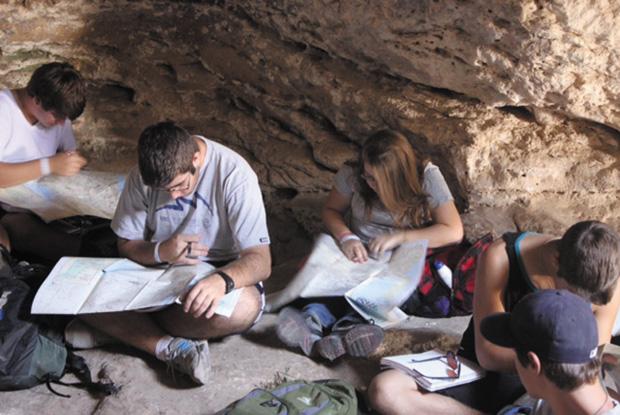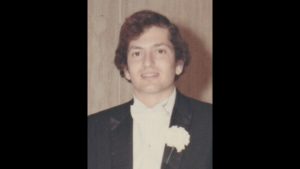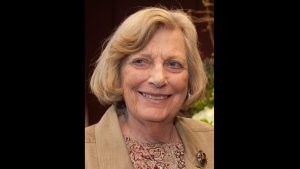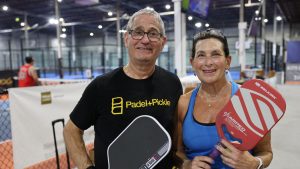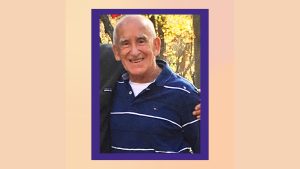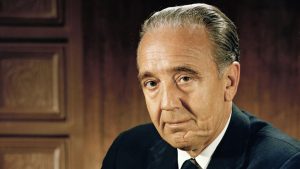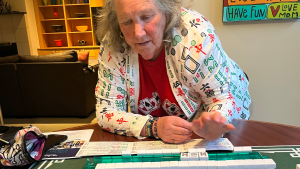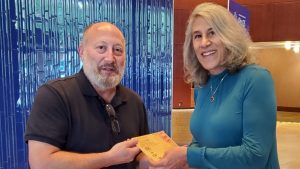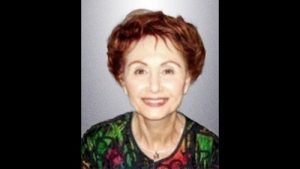Israel study abroad options expanding for teens
Published December 5, 2012
ADULLAM PARK, ISRAEL—I sit in a cave near the Madras Ruins just south of Jerusalem, my legs dusty with the powdery chalk of the rock floor. I’m surrounded by 17 high school students, all busily unfolding oversized maps as their teacher, Rabbi Aubrey Isaacs, instructs them to mark where we are. I see other circled cities and towns—places these students have visited since arriving at the end of August.
This onsite “classroom” is one of many tiyulim, or fieldtrips, the group of sophomores, juniors, and seniors is experiencing this fall. They are the inaugural full-semester class participating in the Alexander Muss High School in Israel (AMHSI) program, based in newly built dorms at the Eshel Hanasi agricultural school in the Negev.
AMHSI (www.amhsi.org), an unaffiliated pluralistic institution, has been around since 1972, offering six- and eight-week sessions throughout the year near Tel Aviv in Hod Hasharon at the Mosenson Youth Village. The program has over 20,000 graduates, including popular singer Matisyahu and “The Devil Wears Prada” author Lauren Weisberger, as well as numerous rabbis and community leaders.
While there have long been college study abroad choices and a recent proliferation of gap-year programs in Israel, not to mention summer youth group trips, AMHSI is just the third organization to offer a high school semester option.
The philosophy of AMHSI is to offer high school students chronological experiential learning in Israel. The curriculum includes a Core course covering Jewish history from the Bible on, and students travel to the places they learn about (they also can get college credits for the course from the University of Miami). Isaacs, who taught Core in the eight-week program, has been brought in to head the new semester program. “Investing in the Negev is investing in the future of Israel,” he says. “The semester offers much more, things two months can’t offer. I think the kids feel that they are actively involved in building the program with us.”
“They call us guinea pigs,” laughs Isaac Tarlin, a sophomore from Sharon, Mass.
This is Rebekah Davis’s first time in Israel; her mother attended the eight-week program in the 1980s. “She’d always talk about this trip and how great it was,” she says. The sophomore from Miami hadn’t gone to Hebrew school, “So everything in Core is new for me.” Leana Silverberg, a junior who attends a day school in New Jersey, had been to Israel before, “But not on such an educational level,” she says. “At school, we’re learning about Tanach, but I wanted to live it, not just learn it.” Ben Brent, a 10th-grader from Orlando, is a veteran traveler to Israel (this is his 11th time here) who is keeping an ongoing blog called The Temporary Israeli (http://benbrent1.blog.com/?p=15).
Rabbi Morris Kipper and his wife Lenore of Coral Gables, Fla., started AMHSI in 1972. A decade later, third-generation developer Stephen Muss was looking for a way to honor his late father, Alexander. “I never went to college,” Muss says, “I barely got out of high school. I’m kind of proud that I’m involved in this superior educational program. It’s just been an extraordinary opportunity for me to help Israel.”
Muss, 84, has big plans to expand the scope of AMHSI. “I have a dream, a hope, a prayer to have 5,000 teenagers come to AMHSI from all over the Diaspora every year,” Muss says. “Jewish continuity depends on Jewish teenagers from all over the world having a meaningful experience in Israel, in a meaningful educational program.”
The Union for Reform Judaism has held programs for high school students in Israel since 1961; what began as an exchange with Israelis has evolved into semesters offered in the fall and spring, known as NFTY-EIE (North American Federation of Temple Youth Eisendrath International Exchange, http://www.nftyeie.org). Since 2001, EIE has been located in the Judean Hills outside Jerusalem, on the grounds of Kibbutz Tzuba. “Part of our program is that it is part of the larger Reform Movement,” says Leah Guskin, director of marketing and recruitment. “Kids go to URJ summer camps, and those feed into EIE, and when they go home, they go back to those communities.”
More than 100 students attend each year, and over 2,000 have completed EIE. This year, 20 students from around the U.S. are enrolled for the fall. Shaina Wolinsky, a junior from Cleveland, is in Israel for the first time. She heard of the program through her URJ summer camp, and thought it would be great to spend a semester with a bunch of friends. Those friends are all new—she knew no one when she arrived. Hannah Hochberg-Miller, from Ventura, Calif., is in Israel for her third time. “I like the independence,” she says. “Living with girlfriends, not parents, is very cool.”
Guskin says more than 80 students from 20 states are now enrolled for the spring semester. Like AMHSI, the program includes a stint in Gadna (an introduction to the Israeli army), a Yam le Yam hike (Sea to Sea, a four-day trek between the Sea of Galilee and the Mediterranean), plus a trip to Poland.
The Conservative movement’s Tichon Ramah Yerushalayim (literally Ramah High School Jerusalem), known as TRY (try.ramah.org.il), is a semester-long program offered in the spring for students in grades 10 to 12. It’s located at the Goldstein Youth Village in the San Simon neighborhood of Jerusalem. There’s also a two month option, known as USY High, which is folded into the semester program; the majority of the 50 to 80 kids enrolled each year stay for the full semester, according to Judy Greene, Israel program coordinator.
“Our program is an opportunity for students to live a complete Jewish life in the Conservative Jewish mode while living in Israel,” says Arie Hasit, TRY recruitment coordinator. “We are about exploring Judaism through Israel, and helping students develop their Jewish identities and their relationship to Israel.” Hebrew is a strong component of this; in addition to the Core course covering Jewish history, plus the regular high school classes like algebra and chemistry, students take 3 1/2 hours of Hebrew a week.
Youth villages are common in Israel, and are essentially boarding schools, often set up for kids without parents, such as refugees and immigrants. A few other schools, including an arts school and a day school for Israelis, are also on the Goldstein campus, giving the TRY students opportunities to interact with Israelis.
Elite Academy, also called Na’aleh (www.elite-academy.org), is for the high school student who wants to make aliyah. It’s a three-year commitment, starting with grade 10, under the auspices of the Jewish Agency. Tuition, room and board, and some travel and expenses are covered. Na’aleh is an acronym for “Noar Ole Lifney Hahorim,” youth making aliyah before parents.
Lapid www.lapidisrael.org) lists all Israel programs for high school students—most are summer options. Masa (www.masaisrael.org/) has a catalog of study choices in Israel, from ulpanim and service programs to graduate university programs.



